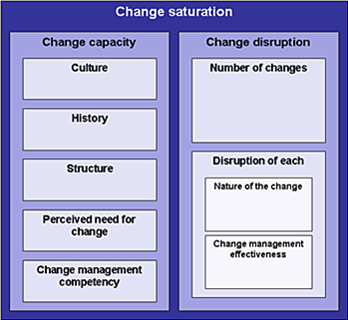The 9 best Change Management resources in July 2022
01 August 2022
Many great articles, posts, podcasts, webinars, videos and memes were published in July about Change Management.
Article written by Morten Kamp Andersen
01 August 2022
Many great articles, posts, podcasts, webinars, videos and memes were published in July about Change Management.
Article written by Morten Kamp Andersen
Wow. A lot of great content has been produced in July, although this is a summer holiday month for many. Maybe it has been a time for creative minds to be active.
This is a collection of my 9 favourite change management articles posted in July 2022. I hope that they serve as a valuable resource for those interested in my passion, change management.
So in no particular order, let's get started…
David Michels is a partner at Bain & Company. In this article, he discusses inspirational leadership. He notes that in the hugely popular TED talk, Benjamin Zander, founder of both the Boston Philharmonic and the Boston Philharmonic Youth Orchestra, shared a realisation that he says changed his life. Twenty years into his conducting career, he said, he realised that the conductor of an orchestra doesn't make a sound. A conductor "depends for his power on his ability to make other people powerful," he said. "I realised my job was to awaken possibility for other people."
So how does one become the type of leader who inspires, who awakens possibilities for others? Understanding the following three principles can help you on your way.
Ben Zander has it right. In business, as in life, your ability to inspire others, to awaken their sense of possibility, is the accurate measure of a leader.
Michelle Haggerty is the Chief Operating Officer at Prosci. She is responsible for Prosci's service portfolio and internal operations, leading the strategic direction of its offerings. In this article, Michelle discusses how acquiring knowledge is only part of the equation and how in the months following your training that applying change management within your organisation will reveal challenges and opportunities.
Michelle goes through five key lessons change management professionals experience as they move on from learning and applying change management concepts in change management training to applying those concepts to changes within their organisations.

Siriphone Maldonado is the Director People Engagement at Harbinger - a Canadian company about the People Side of Change - specialising in Adult Learning & Training Development for ERP and other technology implementations.
In her article, Siriphone states that Change fatigue - the mental strain experienced after undergoing significant or extended periods of change - is a genuine phenomenon and quite common. Pay attention to how you and your team are faring when going through change, and act sooner rather than later to nip change fatigue in the bud before things spiral. She suggests following the tips in the article on how to beat change fatigue and remember your change leader support system. Through this, you'll be able to keep a steady pace as you make your way through the inevitable changes that are a part of today's new normal.
The article contains information about what change fatigue looks like, why it is essential to act, and how Can You Beat Change Fatigue in Your Team? For the latter point, Siriphone suggests five things:
Jennifer Schar and Megan Manning both work for Alvarez & Marsa, a leading global professional services firm that delivers business performance improvement, turnaround management and advisory services to organisations. In this article, the authors argue that how people manage, respond and adapt to change can determine whether a deal delivers on or fails to meet expectations. Yet as anyone experienced with transactions knows, the human element is underemphasised. A deliberate, disciplined approach to change management improves your odds of a smooth transition. It also lays a solid foundation for optimising post-close. The key is to incorporate change management as early as possible.
The four pillars are:
Overall, the two authors' message is: Focus on people
In addition to their blogs and webinars, Prosci also publishes thought leadership articles. This article is about the change management job description.
The primary responsibility of an organisational change manager is to develop and implement change management strategies and plans that maximise employee adoption and usage of required changes.
This ties nicely in with the change manager's goal, which is to drive faster adoption, higher ultimate utilisation of changes, and proficiency with the changes that impact employees who must use the changes in their daily work. These improvements increase benefit realisation, value creation, ROI, and the achievement of results and outcomes.
There are many titles for a person in charge of employee adoption and usage. A change manager might also be called a change management Advisor, -Analyst, -Consultant, -Coordinator, -Facilitator, -Lead, -Manager, -Practitioner or -Specialist.
It is too much here to go through all of the points in the article. I will really encourage you all to read it instead. But a high-level overview could be:
Roles and responsibilities of a change manager - a few examples:
Some additional responsibilities - a few examples::
Skills and qualifications of a change manager - a few examples::
There is also a downloadable 'Sample Change Management Job Description', which is really useful.
Patrick is the Global CEO and Chairman of Hybrid Theory. In this article, he takes note that Twitter might be taken over by Elon Musk, and one of the most dramatic case studies in change management can commence. He sees familiar themes occurring when it comes to change management and four common mistakes people seem to be repeating:
Patrick finishes by saying that transition is the new normal, and leaders need to be sharing stories of what works now and what has stopped working. Every mistake is an opportunity to learn and adapt to a more beneficial outcome. I agree. Let's share more.
When a leader needs to inspire people – or move them to action – nothing compares to face-to-face communication. People will not only hear what you are saying, but they will also perceive the greater meaning of your tone, voice inflexion, emotion and body language. Taking the time to look people in the eye and tell them precisely what they need to know is a powerful way to emphasise and reinforce key messages.
From strengthening relationships to gathering employee feedback, here are six good reasons for leaders to make the time to communicate face-to-face:
Tips for improving Face-to-Face communication include; Ensuring the medium matches the message, establishing an agenda and desired outcomes, making the most of face-to-face time by asking "soft" questions that check in on the whole person – not just the project status, being present and ask clarifying questions, request that cameras are on for critical online meetings so you can read and react to body language to adapt the conversation and encourage virtual group discussion and finally, spend time with employees.
This paper was published in the Journal of Behavioral and Applied Management by Danxia Chen and Joanne Hix from the College of Business, Dallas Baptist University.
The abstract reads: The pandemic brings many unforeseen changes. Thriving organisations are the ones that are agile and proactive. Change management and leadership training play a key role in organisational change and development. This current study examines a group of international managers' virtual training experiences, helping managers to develop change mindsets to use disruptions as opportunities to lead organisations. This group of international managers were better prepared to be the change leaders, moving organisations forward to a thriving tomorrow.
The two authors surveyed 32 research participants representing international managers, department heads, and directors. They completed two months of intensive training in organisational change and development strategies and techniques. During the first day of the training, participants were invited to complete an online self-assessment. At the end of the training, participants were asked to complete the same self-assessment again.
The findings are well worth reading. We can learn from academic research findings.
Phil is joined by business transformation and change management leader Jennifer Rhodes to discuss reporting against a timeline.
At the centre of every change, an initiative is a project plan that maps the activities and tasks required to transition people from current to new ways of working. It functions as a work back schedule from the post-launch support to the project kick-off.
Teams supporting a change spend significant time reporting against the timeline. Being "ahead of" or "on plan" is the goal, but often, falling behind is a reality.
The ability to communicate progress against a timeline is an essential change management skill. Those who do it well can influence expectations and plan details; those who don't can experience greater scrutiny, extra work and lost confidence in their capabilities.
So, how do you report against a timeline to inform stakeholders, guide expectations, and make required enhancements that lead to successful change?
